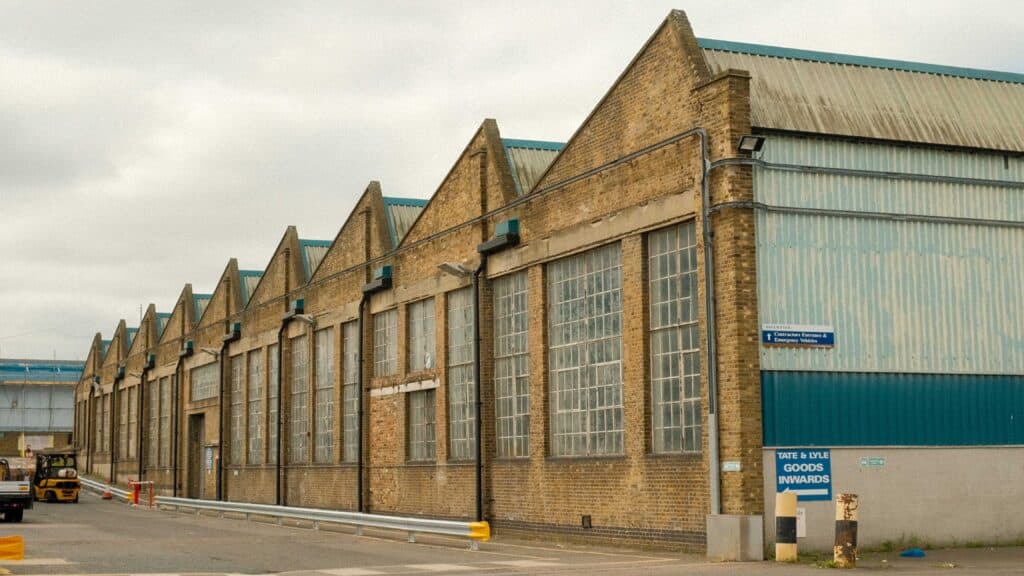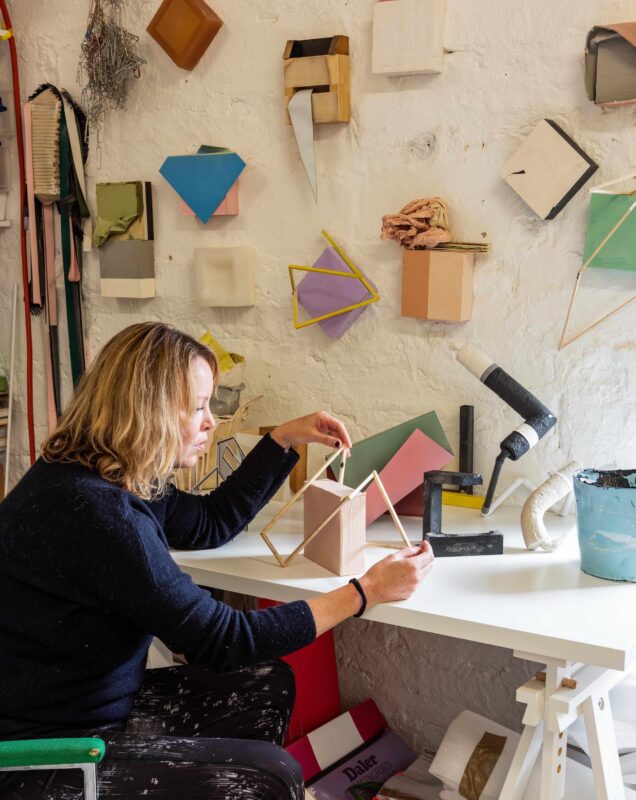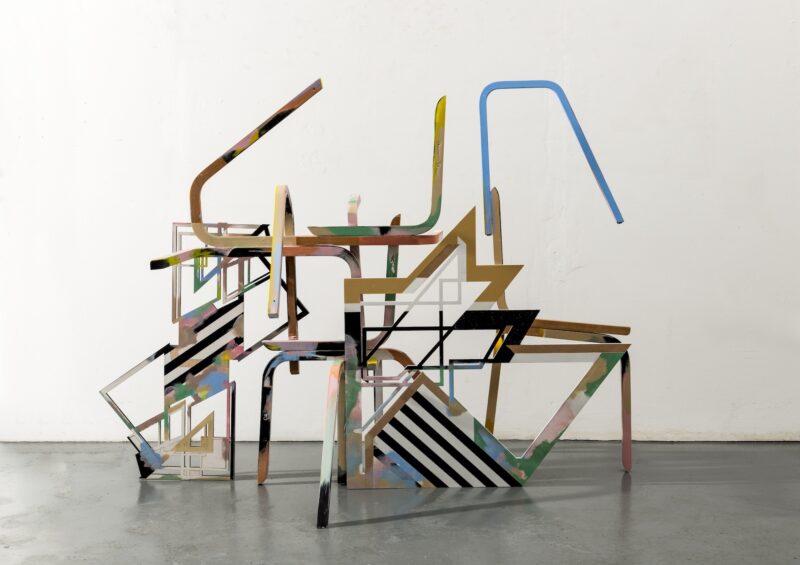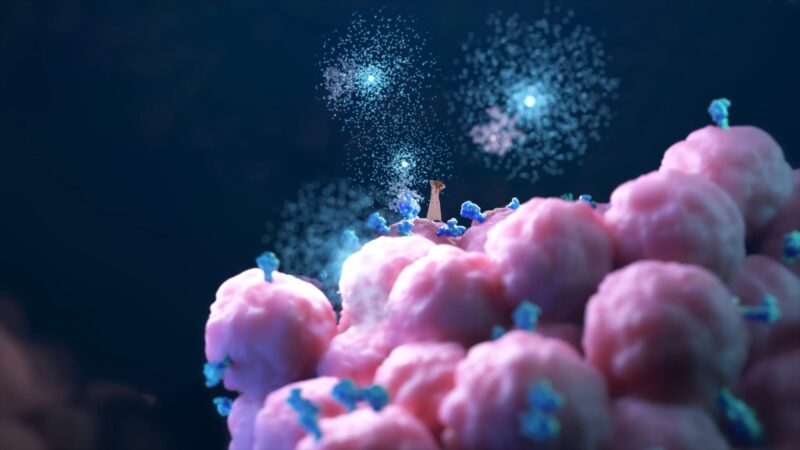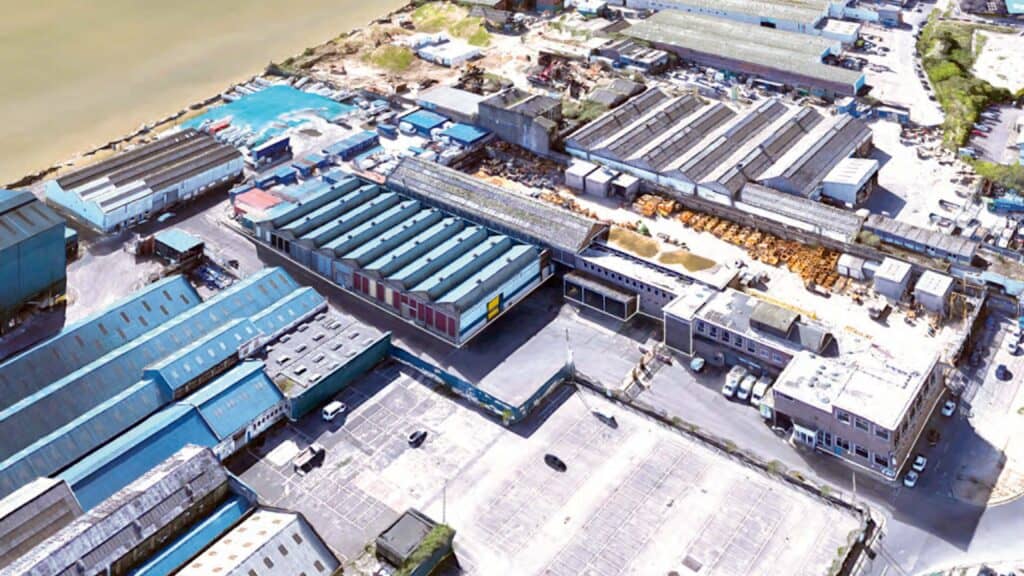
Thorp Stavri are presenting their next show “It happens sometimes, people just explode.” as part of an independent museum-scale exhibition during London’s Frieze week. The Factory Project has been initiated to support emerging to mid-career artists and curators and is presented as a multi-disciplinary survey project. This exhibition plays host to 10 UK based independent curators and curatorial platforms; each producing their own exhibitions within the larger Factory site and will be showcasing upwards of 80 emerging and mid-career artists.
Curatorial partners: Delphian Gallery, Gallery No.32, Haze Projects, Jerome Ince-Mitchel, Mollie E. Barnes & Jacob Barnes, Pacheanne Anderson, Recreational Grounds, Rosalind Davis, Skip Gallery and Thorp Stavri

The Factory Project takes place at the monumental Thameside Industrial Estate, a 67,640 sqft warehouse and yard complex in North Woolwich, Newham – a short walk from London’s City Airport and nestled between the Tate & Lyle’s Sugar Refinery and the Thames Barrier – on Factory Road. It is produced by Thorp Stavri and is supported by Projekt and FAD Magazine. Free tickets can be booked HERE
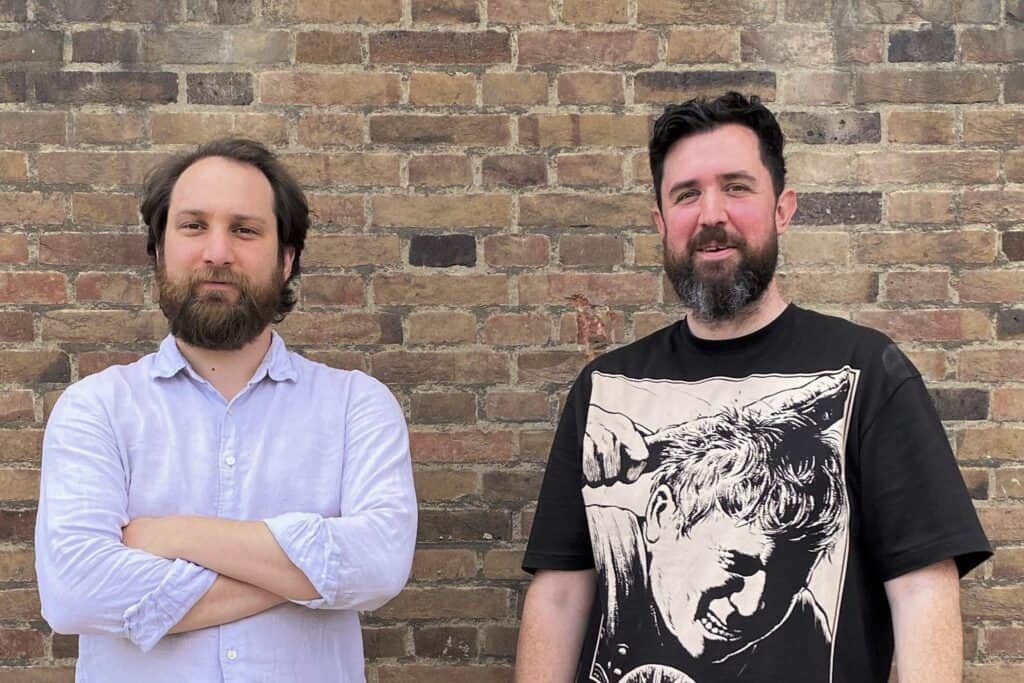
FAD caught up with Eric Thorp & Nicholas Stavri from Thorp Stavri to find out more about their show “It happens sometimes, people just explode.” the wider The Factory Project and a bit about them & their curatorial practice. It kicks off a series of Q&A’s with all the Curatorial partners which we will be publishing over the coming weeks leading up to the opening of The Factory Project on October 9th
FAD: Can you tell us about your curatorial practice?
Eric Thorp: In short, we curate large scale exhibitions, in non-traditional spaces, that support early-career contemporary artists. There’s an emphasis on inclusivity in what we do. The nucleus of that is the ambition to establish ourselves as a supportive entity to a community of creatives that might not be afforded the same opportunities as more privileged groups. But it all stems from a love of art and a feeling that the ‘emerging’ end of the spectrum is where things are more raw and interesting – artists and their work haven’t been affected by the commercial art world in the same way.
But it’s also about showing massive work – stuff that is really visceral to be in the presence of and stuff that a lot of artists don’t get an opportunity to show. We want maximum visual impact when you enter the room.
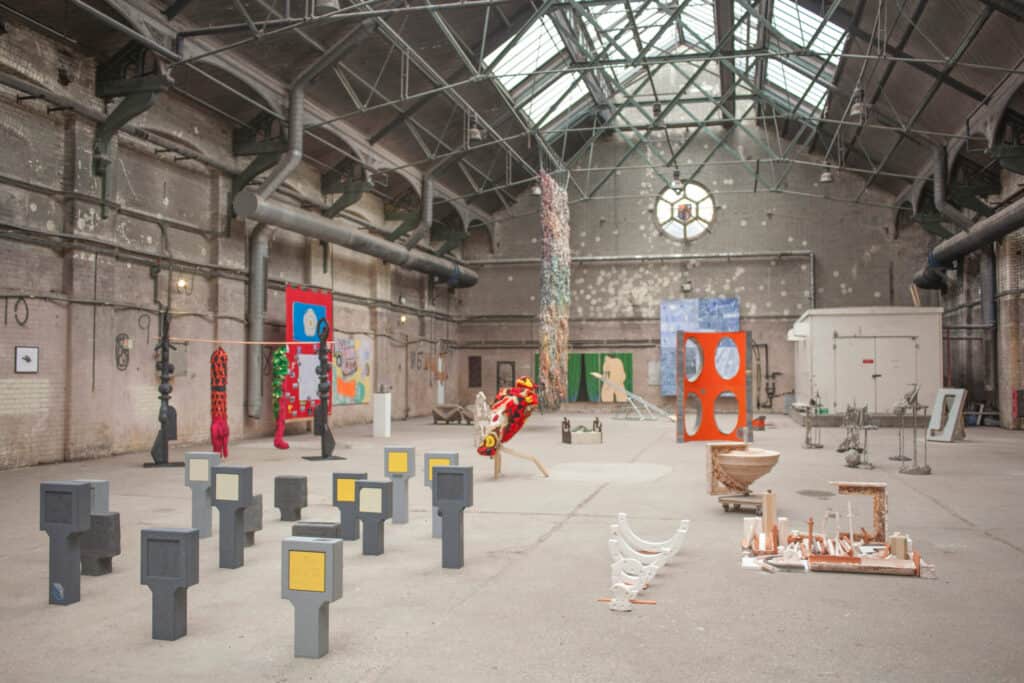
Nicholas Stavri: I guess it varies from case to case, but often it begins with a conversation with an artist or the discovery of a specific space we’d like to explore. With The Factory Project, Eric and I were looking for a space that could hold its own alongside our last Frieze week presentation, ‘Five Hides’. As such, the exhibition site has ended up leading our vision. We spoke with the building’s owners and asked if they wanted to collaborate: They would provide the space, we would contribute with the conceptual framework and the art – and thankfully they said yes. From then on, we began researching, reaching out to our curatorial partners and speaking to the artists we would like to pull together for our show. Once we had finalised a concept, there was a whole lot of writing, funding applications, production, installation, transport and marketing planning which all makes up at least 80% of the work we do.
- Can you tell us a bit about the exhibition you will be presenting at The Factory Project?
ET: It feels like we can have some fun with this exhibition. It isn’t that we’re not taking it as seriously as past shows, it’s just that it’s part of a much larger entity. The Factory Project is essentially plate spinning – we have all these incredible groups and curators that we have to check in with about their exhibitions as well as coordinating our exhibition within the project. I guess having so much going on in one place takes a bit of focus of each individual project and it becomes more about the whole thing and the synergy between each component.
Our show is titled “It happens sometimes, people just explode.” It’s loosely based around the experiences of Otto, the anti-hero protagonist in the film ‘Repo Man’. His character struggles to find a solid place for himself within the world and it culminates with him being abducted by aliens in a repossessed Chevy Malibu – there’s some spontaneous combustion in there too. The show is a frantic explosion of creativity from those with an undefined place within the art world.
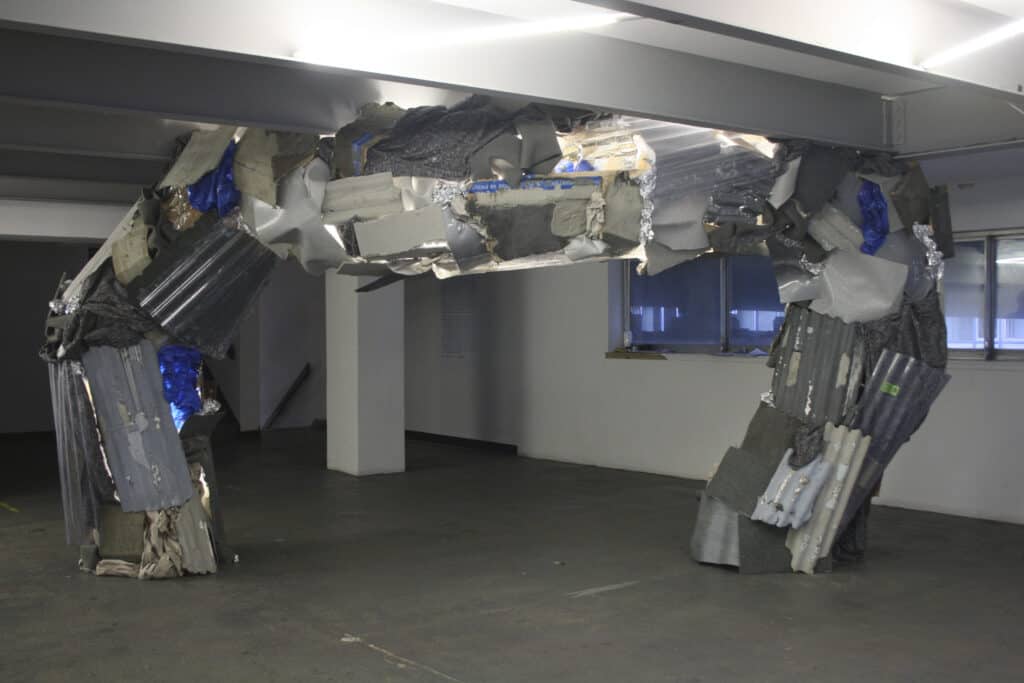
NS: We’re presenting an 11 person group show. There will be some artists returning from previous shows to exhibit with us again, and a cross-section of artists new to Thorp Stavri programming… Some artists are just completing their BA’s and others already exhibiting internationally, at art fairs and with public and private institutions. I’m really excited to get into the space and start installing. We’ve been talking over some brilliant ideas from artists such as Christopher Stead and Catriona Robertson. Both of them are really pushing their work to new limits, both in terms of scale and in the way they are responding to the exhibition site.
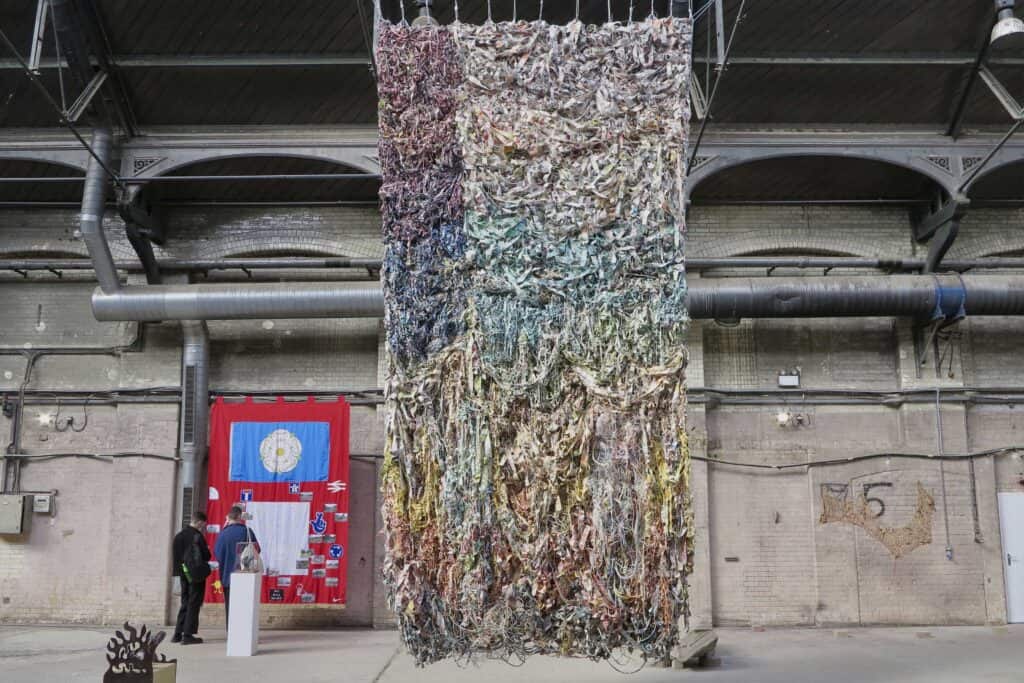
- Which artists have you invited to take part in your section of The Factory Project and why have you chosen them?
ET: Each show we produce sort of acts as a survey or artists we feel are important at that time. We think it’s important to nurture and expand on working relationships with artists we have previously worked with, as well as starting new relationships. Each show is a combination of that.
We like the artists to be as ambitious as possible and to create work that they might not get the opportunity to show elsewhere, due to things like space restrictions and the work not being sellable. We chose artists we feel can produce work on a large scale. Although each show has a narrative, it’s not always our jumping-off point. Thematic links sometimes occur when we have selected artists and we work backwards from there. Sometimes it’s the other way round.
NS: So we have 11 artists presenting work in the Thorp Stavri section of The Factory Project. As always we’ve tried to pull together an eclectic group of artists, with work coming in from London, Manchester and Margate. As well as the artists I’ve already mentioned, we’ve also got a huge sculpture from Liam Fallon on its way down to London, and some brilliant new works from Gabriela Pelczarska and Ellie Hayward. Most of the artists will be making their work on-site so we’ve only seen sketches and maquettes. It really will be great seeing it all come together in October
- How do you feel about the hijack of the word curator by editors, stylists, DJs, Z list celebs, a list celebs, tv personalities & influencers?
ET: Ha! I guess anyone can call themselves whatever they want. We didn’t exactly take the most orthodox path into ‘curation’ and I’m sure there are lots that did who could perhaps look down their nose at what we do. Also, it’s a really young term – people have been curating and making exhibitions etc. for centuries. It’s only in the last 30-40 years it’s had that label. If you want to put up a bunch of pictures on Instagram of your Beanie Babies collection and call yourself a curator so be it. People get caught up in this idea of purity in the art world – nothing is sacred and rules are meant to be broken – if they’re not you get stuck in the same stuffy old structures and it can be very restrictive.
NS: It is not a protected title. I didn’t study curation (I studied Fine Art), instead, I fell into various roles as an artist facilitator, producer and production manager. I choose to believe that it is these lived experiences and thorough insight into the field that is attractive for both the artists and galleries I work with.
- The Factory Project takes place in a very large IRL exhibition space. How do you envision your exhibition to be presented?
ET: We have a rough idea, but that always changes when we come to install. Using non-traditional spaces, like factories and warehouses, present certain challenges, because they were never intended for exhibiting art. In a ‘white cube’ gallery space you don’t have to worry about leaking roofs or pigeon infestation, but where’s the fun in that? There’s a lot to take into consideration, but the challenges are genuinely what makes it so interesting. Anyone can put on a show in a gallery if they have a budget and a bit of common sense – we’re trying to do something different. The process is as big a part of the outcome.
With regards to how it will be presented, you will have to come and visit to find out.
NS: The nature of the warehouse complex means that there is a very limited number of hangable walls. However, we do have an abundance of volume to play with. So by proxy, a lot of the work will need to either be freestanding, hung from a ceiling or be part of an installation of some sort. Exactly how the entirety of the Factory Project will come together is still being worked out, there are a lot of moving parts!
- During COVID/ lockdown what have you been reading, watching, listening to?
ET: I read Brad Phillips’ book ‘Essays And Fictions’, which is bleak and hilarious. It’s sort of snippets and half-truths from his life. I just started Oliver Stone’s new book. I’m always amazed by people who make films on that level – just the amount of work that goes into them – he can write too. I also read Jon Ronson’s ‘The Psychopath Test’, which has now made me think I’m an expert at spotting sociopaths everywhere I go (I’m not).
I re-watched The Sopranos and a bunch of films I hadn’t seen in years like ‘Repo Man’ and ‘Spartacus’. The first night of Lockdown, my wife was pregnant and we escaped South London to be in the suburbs for a bit and decided to watch the ’28 Days Later’ films. I guess we wanted to watch something apocalyptic. I’ve always been fascinated and weirdly comforted by the idea of the apocalypse – everything just stopping and restarting in a different form.
I listen to a lot of NTS – it was great how it operated over lockdown with all the DJs streaming their shows from home. There’s a show by Mild Animals from LA that’s really good. Mark Leckey’s show too – he has a lot of interesting guests doing takeovers. Also, the magnificent Josephine Chime, who was in our last show and is part of this project, has a great show on NTS called ‘In Flames’.
NS: I’ve been reading a driving theory test book that’s been sitting on a shelf since my 17th birthday! I’ve upgraded to an app now and have a test in a few days time… so fingers crossed that goes well! On Eric’s recommendation, I’ve also gotten into The Sopranos. I’ve still not finished it, but I’m nearly there. I like knowing that this show has a finite point, I’m into that. I can’t stand watching something knowing that it could just go on and on. Something that I rediscovered over the lockdowns is the mockumentary, People Just Do Nothing – I can’t get enough of that show. It really takes me back to my misspent youth!
7. Have there been any positives for you from lockdown?
ET: There were loads really. I had a daughter last summer so it was great being at home with her, more than I would’ve pre-COVID. Over the first lockdown I had a real health kick and exercised and ate healthy every day and started drawing and painting a bit. It all kind of fizzled out as work picked back up and we weren’t locked down in the same way, but it was a nice period. We also got a lot done with the online shows, podcasts and organising our last physical show. It was a luxury having time – money was a worry but I can’t think of a time it wasn’t. I think Lawrence Weiner said “time is our greatest commodity” or something along those lines.
NS: I continued to work through all of the lockdowns, albeit from home and with the luxury of a garden. As Eric said, that extra time was brilliant. Not having to commute 2.5 hours a day really made a difference to the way I went about my days… everything felt a lot less rushed and I was able to do more things that brought joy into my life. I’m not saying I started baking or took up Yoga… but the veg patch looks better than it ever did! Lockdown was obviously horrible in a lot of ways for a lot of people, but there were definite positives.
8. 2022 what do you have planned? & do you feel confident about the future?
ET: Ha ha… We always feel confident- that is when we’re not riddled with self-doubt! There is a general consensus between us, that if we just keep doing it, it will all work out. We have a strong belief in what we do and we’ve done everything up to this point on next-to-nothing, so we haven’t got much to lose by taking risks.
NS: We’ve got some exciting projects on the cards for 2022. Covid has slowed things down a little, but with all being well we should have at least two spaces confirmed for next year – one at a mahogany panelled, neo-gothic mansion on Embankment and the other a disused office and yard space overlooking the O2. Sign up to our mailing list to hear more about those.
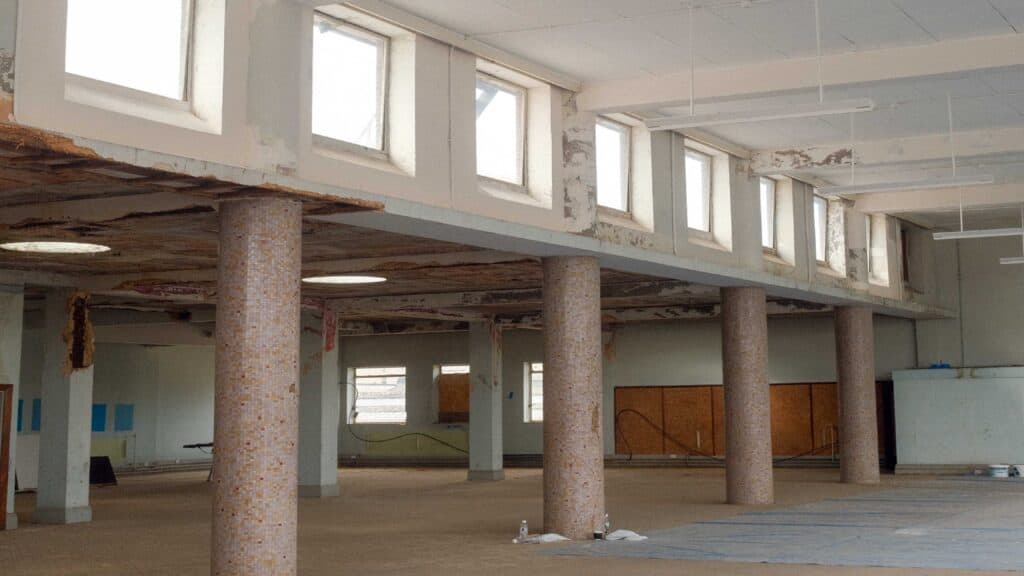
The Factory Project is one of the largest curated events during London’s Frieze week and will be held at Thameside Industrial Estate, from 9th – 22nd October 2021. Free Tickets
The Factory Project Thameside Industrial Estate Factory Road London E16 2HB
Opening day: 9th October – 12-6pm Times: Monday – Sunday 12-6pm
